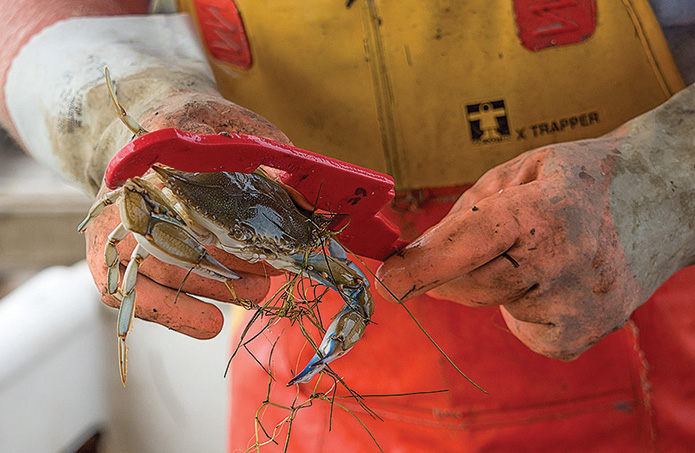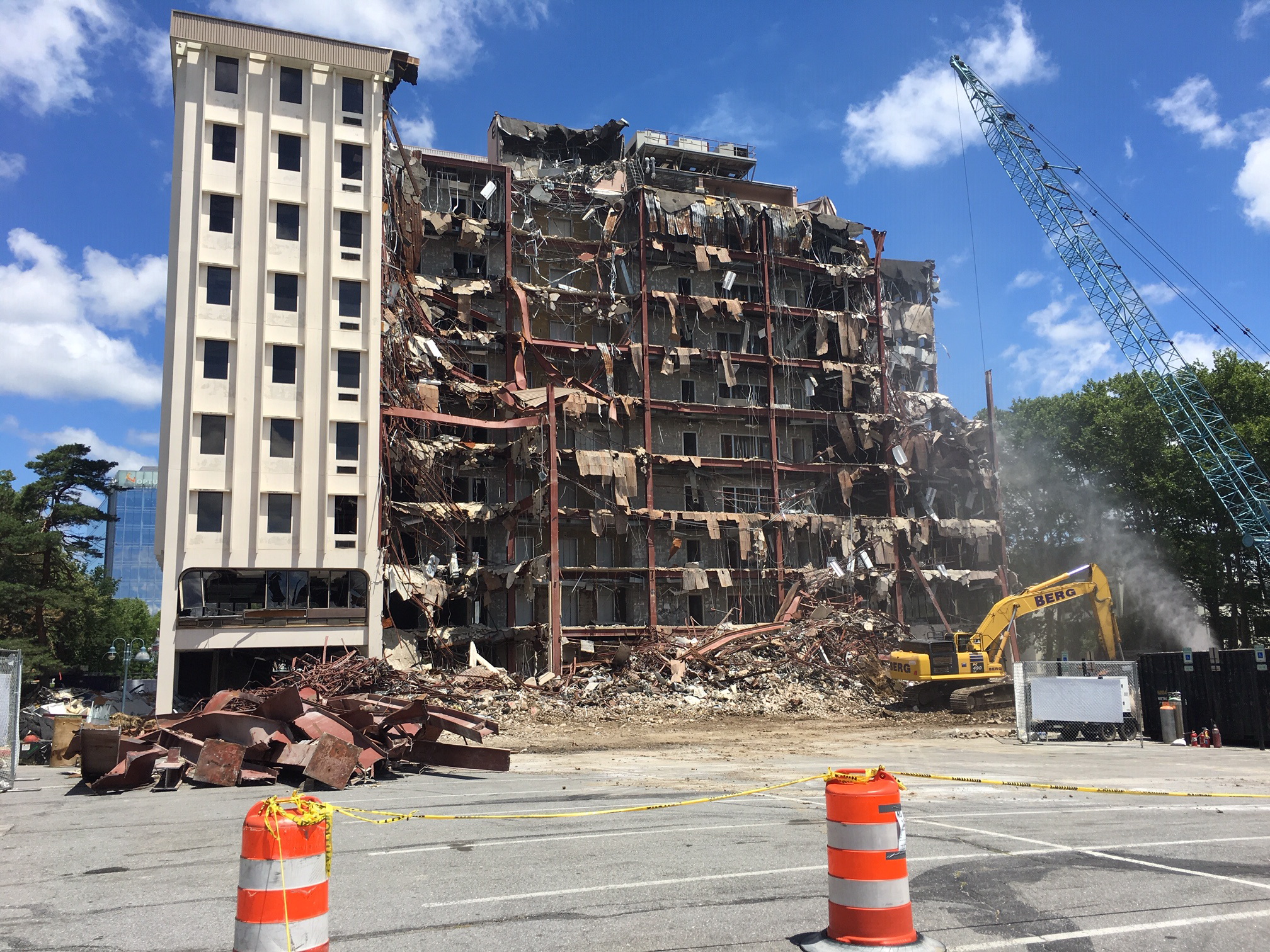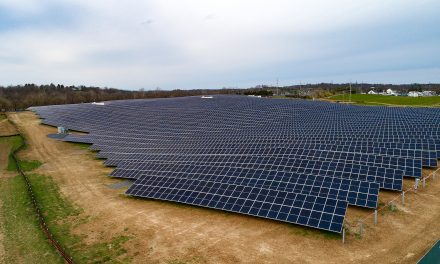By Timothy B. Wheeler
Bay Journal
At the beginning of July, media across Maryland delivered good news for those planning a traditional feast of Chesapeake Bay blue crabs on Independence Day.
Baltimore TV station WJZ, for instance, touted a new report that the Bay’s crab population had increased 60% percent since 2018 — “meaning you can dig into 60% more crabs over Fourth of July weekend!” the station enthused.
“The survey is in,” echoed WMAR, another Baltimore station, “and it comes with great news for Maryland crab lovers!”
Someone apparently forgot to tell the crabs, at least in the Upper Bay. While supplies were generally ample in the Lower Bay through spring into summer, crabbers in other places had a hard time finding enough of the crustaceans to satisfy their crab-craving customers.
“In 43 years of crab potting, this has been the worst I’ve seen,” Charles County waterman Billy Rice complained shortly after the holiday weekend. Though his catch was starting to improve by mid-July, Rice, who crabs in the Potomac River, said the first half of the season had been so bad that he’d begun working fewer pots because there were so few crabs to be found in them.
Not fake news
The TV stations weren’t reporting fake news. A winter survey by Maryland and Virginia scientists released in early May did find the Bay’s crab population had soared 60% over the previous year — to an estimated 594 million crabs, the highest number since 2012.
But the strong growth in the Bay’s crab population seen in the winter survey was no guarantee that there would be higher harvests everywhere in the Bay, and there weren’t — at least not through the first half of the commercial crabbing season. The season runs March 17 through Nov. 30 in Virginia and April 1 through Dec. 15 in Maryland.
While Virginia watermen were said to be pulling in more crabs than last year, some Maryland watermen were left struggling during spring and summer holidays trying to explain to frustrated customers why they couldn’t find the crab bounty that scientists had described.
The seeming disconnect between the survey results and the first half of the harvest season has reinforced some watermen’s skepticism about the reliability of fisheries science. Others say the problem isn’t with the survey, but in how the findings are portrayed to the public.
Maryland and Virginia have been running a winter survey since 1990, jointly dredging 1,500 sites around the Bay to see how many crabs they can find buried in the mud when cold weather renders them immobile. Experts consider the survey a highly reliable year-to-year gauge of the Chesapeake’s crab population. Fisheries managers have used it to adjust crabbing regulations annually to ensure a sustainable harvest.
Survey has limits
But the survey’s findings are often treated by the news media as a forecast of the crabbing season just starting, and agency press releases at times have hyped results that way. In early July, for instance, an email to reporters from the Chesapeake Bay Program about a scientific status report on crabs carried a subject line stating “there’s 60% more crabs to eat over the Fourth of July,” even though the report itself didn’t make such a prediction.
As a result, the public — and watermen — looked for a bountiful blue crab season that didn’t play out the way they expected it to.
Fisheries scientists say the survey has generally been a reliable indicator of how that year’s harvest will go. But finding a lot of crabs over the winter doesn’t mean there’ll be plenty when people want them, or that prices will drop. And sometimes, the survey and harvest diverge. In the 2017–18 survey, for example, scientists saw an 18% decline in overall abundance, but the Baywide commercial harvest in the summer of 2018 hit 55 million pounds, slightly better than 2017.
This year, said Genine McClair, the DNR crab program manager, “Considering what the survey said, we would expect to have a pretty decent year.”
Why harvest hasn’t met expectations
But she said there are a number of reasons why the harvest had been so spotty around the Bay through the first half of the season.
First of all, she noted, while the winter survey did find an abundance of crabs, 60% of them were juveniles — too small to be legally harvested until late this season or possibly next year, depending on how fast they grow.
The adult male crabs that were large enough to be harvested through the first half of the season are a “carry-over from last year,” McClair said. Last year’s survey found that the male population had decreased by 23%, so that, she suggested, could help explain lower early harvests.
Watermen in various parts of the Bay did report seeing large numbers of small crabs. But some in the Upper Bay and its rivers said they didn’t see many of any size.
Some watermen also speculated that the record freshwater flows from last year’s heavy rains may have driven crabs down the Bay, which might explain their scarcity in the northern half. McClair said that this year’s survey found crabs more concentrated in the southern end of the Bay than in previous years when the overall abundance was similar in 2010 and 2012. But the distribution wasn’t dramatically different than the year before.
Salt water and fresh
McClair cautioned that the survey is like a snapshot. Once the water warmed and crabs got active, the unusually low salinity levels that persisted from spring through most of the summer could have prompted them to move elsewhere.
“Crabs can physically stay in low salinities,” she said, “but they’re not going to stay in that if there’s nothing to eat.” Adult male crabs tend to prefer salinity ranging from 3 to 15 parts per thousand, she said, but the levels in Maryland’s tributaries were unusually low, stemming from the persistent rainfall the last two years.
Typically, early-season harvests are strongest down the Bay, where the water warms up sooner in the spring and crabs first begin moving about. Salinity levels there also tend to be higher.
So, despite catching more crabs, Hudgins figured he’s netted less money through mid-August because prices are so much lower.
Some Maryland crabbers also reported doing well the first half of the season, particularly from the Nanticoke River south along the Eastern Shore, according to McClair. Some watermen from farther up the Bay, where crabbing typically is slow in spring, journeyed south to take advantage of the reported abundance.
Talbot County waterman Jeff Harrison, meanwhile, said he’d had a “great year” so far crabbing in the Choptank River.
“We caught crabs right off,” he said, noting that the mild winter had helped more adults survive the winter, “and the price was good.” He also said he’d seen a lot of little crabs.
The catch wasn’t nearly as good to the north, McClair said, where the DNR summer trawl survey found few crabs in the Chester River or in Eastern Bay.
Crabs were elusive along much of the Western Shore as well, at least early in the season.
Allison Colden, Maryland fisheries scientist for the Chesapeake Bay Foundation, said salinity appeared to be a major factor in the variability of the crab harvests from one place to another. But, she added, “I’m not convinced that’s the only thing driving where they are.”
Relaxing rules on crab size
The surfeit of small crabs has prompted Dorchester County watermen to renew a longstanding campaign to get Maryland to relax a crabbing regulation that dictates a midseason increase in the minimum catchable size. Crabbers may keep any crabs at least 5 inches across until July 15, when the threshold goes up to 5.25 inches.
Dorchester watermen said the increase in minimum size forced them to throw back the bulk of the crabs they caught after mid-July. They want the DNR to consider delaying the size change by two weeks.
“We only ask for two weeks,” said Dorchester crabber Bubby Powley. “With everybody in the Lower Bay [crabbing], it’s killing us.” He suggested the extension should be tried as an experiment.
Dorchester crabbers have tried without success for years to end or relax the minimum size increase. Their bid to ease the rule two years ago led to the Hogan administration firing Brenda Davis, the DNR’s veteran crab manager at the time. Davis had told the Dorchester group that to prevent overharvesting they’d have to accept some other catch rule being tightened in exchange. They balked at the trade-off, and the rule remained, but Davis lost her job after the Dorchester group complained to Hogan.
Other crabbers oppose changing rule
Crabbers in other parts of the Bay have opposed relaxing the rule, with some raising economic concerns and others conservation issues. While Dorchester crabbers can sell smaller crabs to the picking houses that are their main market, other crabbers say they won’t earn as much selling smaller animals for steaming.
And this year, at a late July meeting, a few members of the DNR’s Tidal Fisheries Advisory Commission said they worried that the change could remove a greater share of male crabs from the Bay than scientists have said is sustainable, which might prompt regulators to impose catch limits on male crabs for the first time.
“You risk going over the trigger point,” said crab retailer Gail Sindorf of the Kent Island Crab Co. in Pasadena. She called it a “dangerous” move.
The advisory commission voted in late July to urge the DNR to work with the crab industry on weighing “science-based management options” for the male crab fishery, specifically dealing with minimum size limits and possible changes to the season. Any proposed changes for next year would have to come back before the advisory commission.
Meanwhile, CBF’s Colden said agencies might want to consider altering the way they report the winter dredge survey results. The news media have been conditioned to treat the survey as a prognosticator of harvest, she said, when it’s not that simple.







Recent Comments